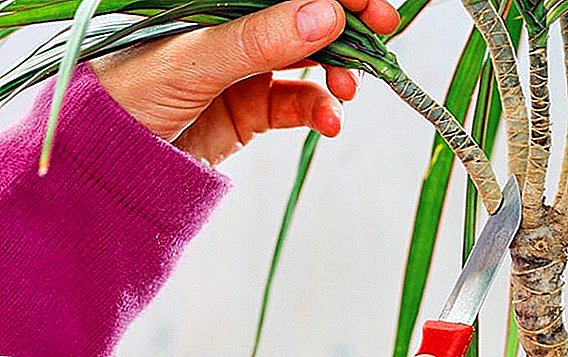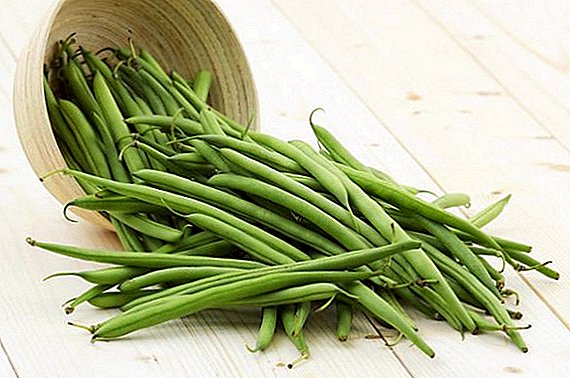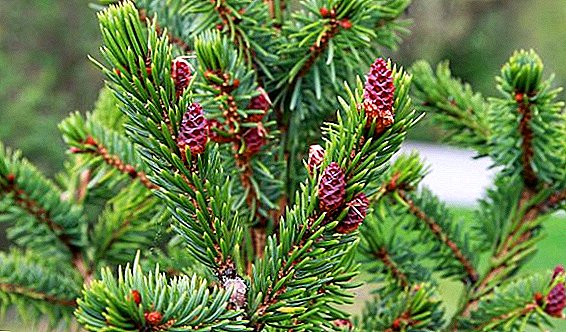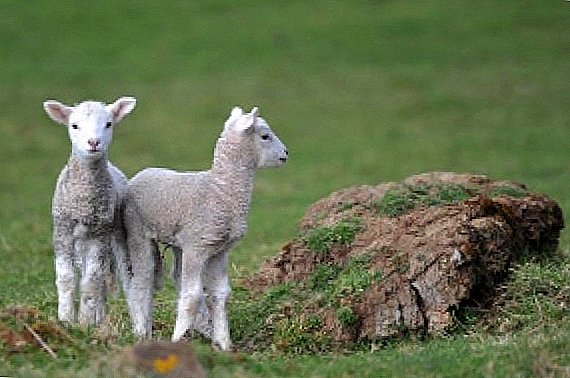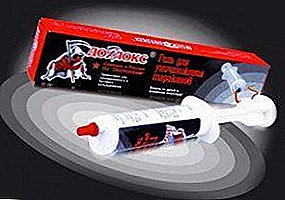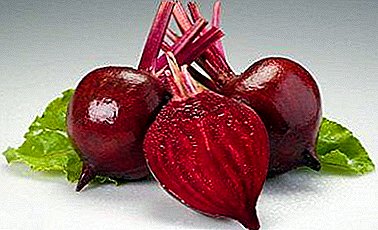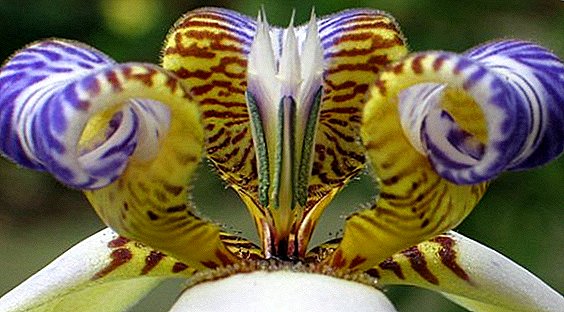 The flower of the apostles or the walking iris (this is also called the neo-maric) is today considered an exotic plant. Although only 20-30 years ago this flower could be seen in many buildings, schools, libraries. A fan of malachite foliage always pleased visitors, but flowering was rarely noted. The fault is the non-compliance with the temperature and improper care. How to reproduce neomarich and what are the nuances of care, we will tell in the article.
The flower of the apostles or the walking iris (this is also called the neo-maric) is today considered an exotic plant. Although only 20-30 years ago this flower could be seen in many buildings, schools, libraries. A fan of malachite foliage always pleased visitors, but flowering was rarely noted. The fault is the non-compliance with the temperature and improper care. How to reproduce neomarich and what are the nuances of care, we will tell in the article.
Botanical description of the plant
Neomarika (lat. - Neomarica) is a prominent representative of the iris family. It is a herbaceous plant growing in natural conditions in the tropical forests of Central and South America and in West Africa.
Did you know? There is a legend that a neomarisk blooms only when the number of leaves reaches 12. Therefore, it has another name - the apostolic flower.
The plant received its popular name (walking or walking iris) because of the specific nature of flowering: it throws the peduncle about 1.5 m in height. After the flowering stops, an independent plant appears at the end of the stem, which develops and grows in volume. As a result, under its weight, the peduncle leans towards the ground. After some time, the process takes root and becomes an independent plant.
The leaves of the flower are long, leathery, have the shape of a sword. The width of the sheet plate is 5-6 cm, and the length is 0.5-1.5 m.
Flowering occurs from late May to early June. The pedicle is formed directly on the leaf. Each arrow produces 3-5 inflorescences that delight with their flowering only 2-3 days. The flowers are large, about 5 cm in diameter, fragrant, painted mainly in cream shades. In the throat of the inflorescence there are pale blue veins. 
Types of Neomarichs
In nature, there are more than 20 species of walking iris. In addition to natural species, there are hybrid.
Did you know? According to some information, the flower got its official name because of the love of water, in honor of the nymph Marika.
But at home only a few species of neomarite are grown:
- Slender. Large flower. The leaves have the shape of swords, leathery, dark green, form a fan. The length of each leaf reaches 40-60 cm, width - 4-5 cm. About ten flowers with a diameter of 6-10 cm are formed on one peduncle. The flowers have cream or golden tones and are ephemeral. In the morning they begin to unfold slowly, closer to noon the disclosure is already complete, and in the evening there is withering.

- North. Perennial flower with flat leathery leaf plates 70-90 cm long and 4-5 cm wide. The flowers are blue-purple or pale lavender, have a light fragrance. The diameter of each flower is 8-10 cm.
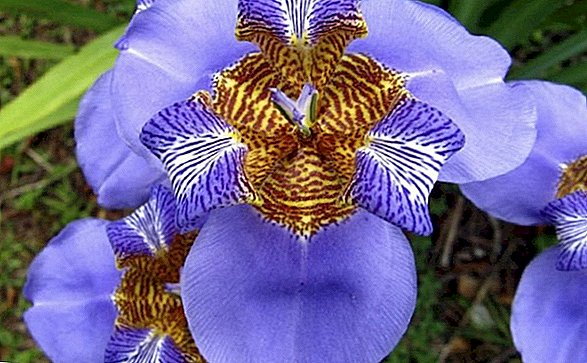
- Variegated. It differs from other types of motley foliage and abundant, long flowering (flowering inflorescences replace new ones). On the green leaf plate stand out contrasting white vertical stripes.
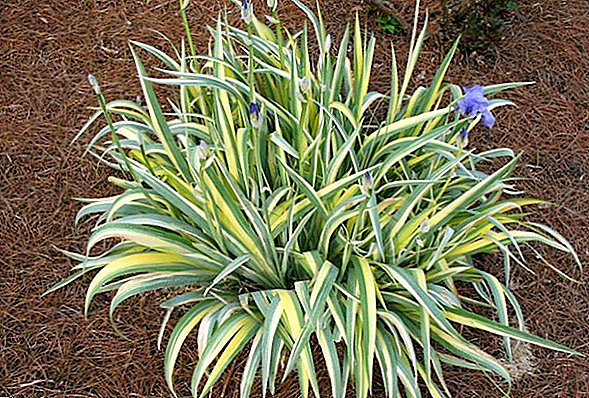
- Yellow. A hybrid variety, since the neomarmar wild species are not characterized by shades of yellow.
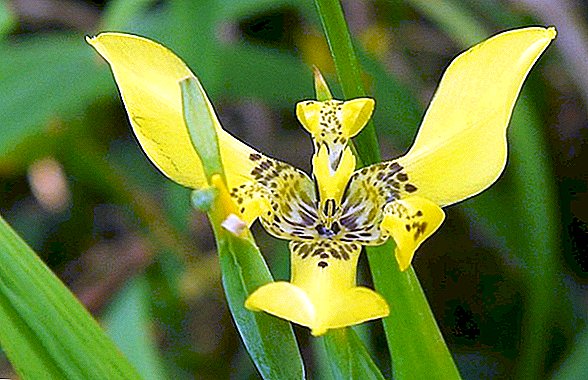
Conditions for growing at home
Neomarich is an unpretentious plant, and observing the basic rules, you can achieve active growth and flowering. Despite the fact that the flower requires a lot of space for itself, it is successfully grown in partial shade.
Location and lighting
Neomaric is best grown in the eastern or western directions. The sun burns the leaves of the flower, which negatively affects the appearance, so the plant should be pritenyat from aggressive midday rays.
Temperature conditions
Walking iris loves coolness. At the beginning of the growing season, the temperature should be maintained within + 10 ... + 15 ° C, and during the flowering period - + 20 ... + 23 ° C.
Important! Cool temperatures during rest periods are imperative. High rates lead to the fact that the neomarich stops blooming.
In the resting phase, it is better to transfer the pot to a cool place with a temperature of + 5 ... + 8 ° C.
Air humidity
Favorable environmental humidity is 50-60%. The plant must be sprayed on hot days in the summer and during the heating season. From time to time the flower is washed in the shower (wash off the dust with warm water). After the procedure, you should wait until the water drains from the drainage holes. 
Home care
It is easy to care for a homely neomarich. The plant develops rapidly, but begins to bloom only with proper care.
Watering rules
In summer, the plant should be watered abundantly, walking iris consumes a lot of water. To humidify, they take soft (thawed, distilled, boiled) water with a temperature of + 23 ... + 25 ° C. You can add lemon juice to water. In spring and summer days, water is watered every 3-4 days. In the autumn, at the end of the flowering phase, watering is reduced to 7–10 days, and in winter it is reduced to a minimum.
Important! Too much water can damage the root system.
Top dressing
In the wild, neomarika grows on barren soils, and therefore does not need additional fertilizers. If desired, you can make additional feeding during May-June 1-2 times a month. For this flower suitable preparations for orchids.
Pruning
This procedure is done as needed, removing dried flower stalks and foliage. To preserve the attractiveness, it is recommended to cut the children so that the plant does not release new buds.

Transfer
Young bushes transplanted annually. Then it is necessary to replace the flower every 2-3 years in a new container. Do it in the spring. For transplantation, a shallow wide container is chosen because the root system of the neomarish is small. A drainage layer is poured on the bottom of the pot, then the prepared soil. The roots spread over the entire surface, deepening them by 4-5 cm.
The composition of the soil should contain such components:
- sod land - 1 serving;
- leaf or peat ground - 2 parts;
- crushed pine bark or river sand - 1 portion.
Most species of walking iris grow on slightly acidic soils with a pH level of 5-6 units. The exception is the Slender Neomarich, which is demanding in this regard: it needs a neutral soil with a pH of 6.6-7.5. If the flower has grown strongly, it can be separated.
Did you know? In the Middle Ages, flower cultivation was difficult, and gardeners were highly respected. Therefore, those who showed disrespect for their work, could be chained to the pillory and even cut off his hand.
During the rest period
The plant passes into a phase of rest from the middle of October and is in it till the end of February. For this period, the neomarich is located in the most lighted place and provides it with a temperature range of + 5 ... + 10 ° C.
Breeding
In most cases, neomarich is propagated vegetatively. Growing a flower from seed is considered an inefficient and very time consuming process.
Dividing bush
As the neomarich grows with time, it forms a sweeping bush containing several rosettes. In this case, the flower can be divided. Neomarich is dug out, cleaned with an earthen clod and divided into pieces with a sharp tool (for example, a blade). In each department there should be 3-4 buds for growth. Cut edges sprinkled with crushed charcoal and immediately placed in the soil. 
Rooting babes
After flowering, babies appear at the ends of the pedicel. They are actively developing and are ready for fast rooting. Developed child sockets are cut and placed in moist soil.
Important! If the children do not have time to develop, they are rooted, not separating from the mother flower.
Next to the mother plant, they put a container with a light, moist soil, bend in the socket there and lightly drop it. To strengthen the baby fix the clip or wire. Rooting will take 1-2 weeks. After the appearance of the root system, the peduncle is pruned.

Diseases and pests
Neomarick is characterized by the presence of immunity to many diseases. The only pest that can spoil a bush is spider mite. As a rule, the parasite infects the flower when the growing conditions are violated, in particular, when the air is too dry.
The tick is detected by a barely visible cobweb on the edges of the leaf plate and numerous “punctures” on the surface. As soon as you notice the first signs, you should start the fight. To do this, wash the flower in the shower, carefully treating the leaves with soap and water. In addition, it is necessary to spray neo-maric insecticides 2-3 times a week. 
Constant stagnation of moisture can lead to the development of an unpleasant disease - root rot. In cool conditions, the problem is only getting worse. Getting rid of the problem is simple: the flower is taken out of the pot, the roots are cleared of earth and pruned damaged parts. After that, they are treated with fungicides and transplanted to a new, clean soil.
Neomarich is a beautiful exotic flower that can grow even the most inexperienced florist. A little attention and favorable conditions will be rewarded with magnificent flowering and lush greenery.






